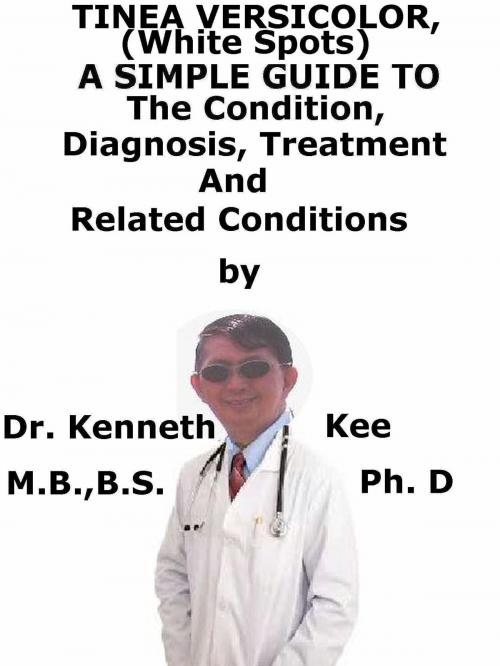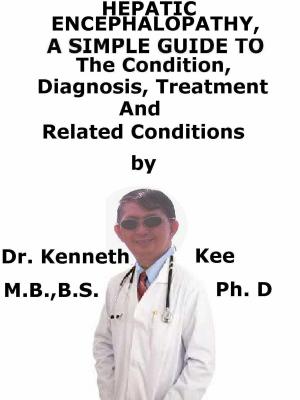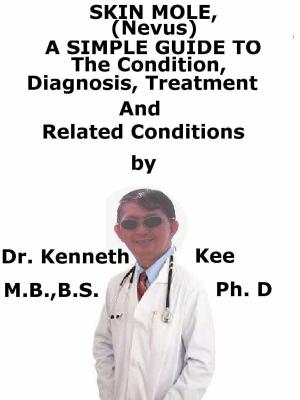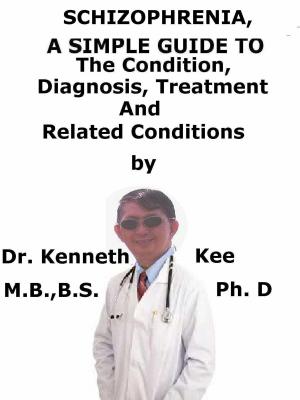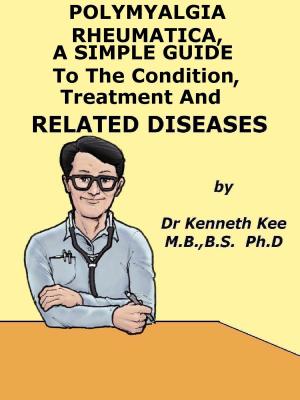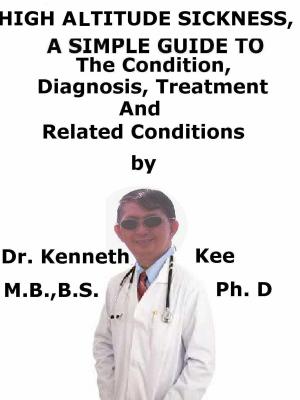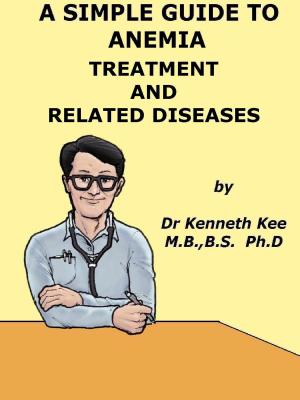Tinea Versicolor, (White Spots) A Simple Guide To The Condition, Diagnosis, Treatment And Related Conditions
Nonfiction, Health & Well Being, Medical, Specialties, Dermatology, Health, Ailments & Diseases, Skin| Author: | Kenneth Kee | ISBN: | 9780463284193 |
| Publisher: | Kenneth Kee | Publication: | June 8, 2018 |
| Imprint: | Smashwords Edition | Language: | English |
| Author: | Kenneth Kee |
| ISBN: | 9780463284193 |
| Publisher: | Kenneth Kee |
| Publication: | June 8, 2018 |
| Imprint: | Smashwords Edition |
| Language: | English |
This book describes Tinea Versicolor, Diagnosis and Treatment and Related Diseases
Tinea versicolor is a frequent medical skin disorder in which flaky discolored patches appear mainly on the chest and back.
Tinea versicolor is a long-term (chronic) fungal infection of the skin.
It is sometimes called Pityriasis versicolor, although the name 'tinea' should strictly mean an infection with a dermatophyte fungus.
It is caused by the growth of the lipophilic yeast micro-organism, Malassezia furfur (Pityrosporum orbiculare in its yeast-like form) that forms part of the normal flora of the human skin.
Normally Malassezia species. grows sparsely in the seborrheic areas (scalp, face and chest) without causing a rash.
14 different species of Malassezia species have been identified.
Causes
Tinea versicolor appears fairly frequently on the skin.
It is caused by a type of fungus called Pityrosporum ovale.
This fungus is normally found on human skin.
It only produces a disorder in certain situations:
-
The condition is most frequent in adolescent boys and young adult men.
-
It normally happens in hot climates.
Symptoms
It normally has an insidious onset and sometimes it may take several months before it is observed.
Macular lesions and patches of altered pigmentation are seen primarily on the body.
These skin spots often extend to the neck, upper arms and abdomen and can sometimes occur at other sites.
The fungal spot has a superficial scale which is easily seen by scraping the surface with a finger nail.
In darker skins or heavily tanned people, the lesion shows de-pigmentation (known as Tinea versicolor) and is less likely to feel itchy.
Tinea versicolor is not infectious.
Diagnosis
Skin scale samples can be taken to determine the nature of the skin disease.
They have a 'spaghetti and meatball' appearance on potassium hydroxide wet-mount examination.
It is easier to show the yeasts in scrapings taken from the brown type of Tinea versicolor than from the white type.
Microscopy is documented as positive if hyphae and yeast cells are seen.
Culture is frequently negative because the yeasts are quite difficult to be grown in a laboratory.
The doctor will evaluate a skin scraping under a microscope to look for the fungus.
Treatment
Tinea versicolor should be treated initially with topical antifungal, particularly topical imidazoles - e.g., clotrimazole, econazole, miconazole, and ketoconazole in various formulations (creams or shampoos).
Ketoconazole shampoo (Nizoral) should be used on affected areas and made into lather, then left for three to five minutes before cleaning it off.
This should be done every day for five days.
Selenium shampoo can be applied as an alternative (its use is not licensed).
Selenium shampoo should be diluted with water (to decrease the tendency of irritation).
It is applied to affected areas for ten minutes and then washed off.
This should be done every day for ten days.
In widespread or resistant cases itraconazole 200 mg daily is given for seven days
TABLE OF CONTENT
Introduction
Chapter 1 Tinea Versicolor
Chapter 2 Causes
Chapter 3 Symptoms
Chapter 4 Diagnosis
Chapter 5 Treatment
Chapter 6 Prognosis
Chapter 7 Vitiligo
Chapter 8 Hypo-pigmentation skin
Epilogue
This book describes Tinea Versicolor, Diagnosis and Treatment and Related Diseases
Tinea versicolor is a frequent medical skin disorder in which flaky discolored patches appear mainly on the chest and back.
Tinea versicolor is a long-term (chronic) fungal infection of the skin.
It is sometimes called Pityriasis versicolor, although the name 'tinea' should strictly mean an infection with a dermatophyte fungus.
It is caused by the growth of the lipophilic yeast micro-organism, Malassezia furfur (Pityrosporum orbiculare in its yeast-like form) that forms part of the normal flora of the human skin.
Normally Malassezia species. grows sparsely in the seborrheic areas (scalp, face and chest) without causing a rash.
14 different species of Malassezia species have been identified.
Causes
Tinea versicolor appears fairly frequently on the skin.
It is caused by a type of fungus called Pityrosporum ovale.
This fungus is normally found on human skin.
It only produces a disorder in certain situations:
-
The condition is most frequent in adolescent boys and young adult men.
-
It normally happens in hot climates.
Symptoms
It normally has an insidious onset and sometimes it may take several months before it is observed.
Macular lesions and patches of altered pigmentation are seen primarily on the body.
These skin spots often extend to the neck, upper arms and abdomen and can sometimes occur at other sites.
The fungal spot has a superficial scale which is easily seen by scraping the surface with a finger nail.
In darker skins or heavily tanned people, the lesion shows de-pigmentation (known as Tinea versicolor) and is less likely to feel itchy.
Tinea versicolor is not infectious.
Diagnosis
Skin scale samples can be taken to determine the nature of the skin disease.
They have a 'spaghetti and meatball' appearance on potassium hydroxide wet-mount examination.
It is easier to show the yeasts in scrapings taken from the brown type of Tinea versicolor than from the white type.
Microscopy is documented as positive if hyphae and yeast cells are seen.
Culture is frequently negative because the yeasts are quite difficult to be grown in a laboratory.
The doctor will evaluate a skin scraping under a microscope to look for the fungus.
Treatment
Tinea versicolor should be treated initially with topical antifungal, particularly topical imidazoles - e.g., clotrimazole, econazole, miconazole, and ketoconazole in various formulations (creams or shampoos).
Ketoconazole shampoo (Nizoral) should be used on affected areas and made into lather, then left for three to five minutes before cleaning it off.
This should be done every day for five days.
Selenium shampoo can be applied as an alternative (its use is not licensed).
Selenium shampoo should be diluted with water (to decrease the tendency of irritation).
It is applied to affected areas for ten minutes and then washed off.
This should be done every day for ten days.
In widespread or resistant cases itraconazole 200 mg daily is given for seven days
TABLE OF CONTENT
Introduction
Chapter 1 Tinea Versicolor
Chapter 2 Causes
Chapter 3 Symptoms
Chapter 4 Diagnosis
Chapter 5 Treatment
Chapter 6 Prognosis
Chapter 7 Vitiligo
Chapter 8 Hypo-pigmentation skin
Epilogue
